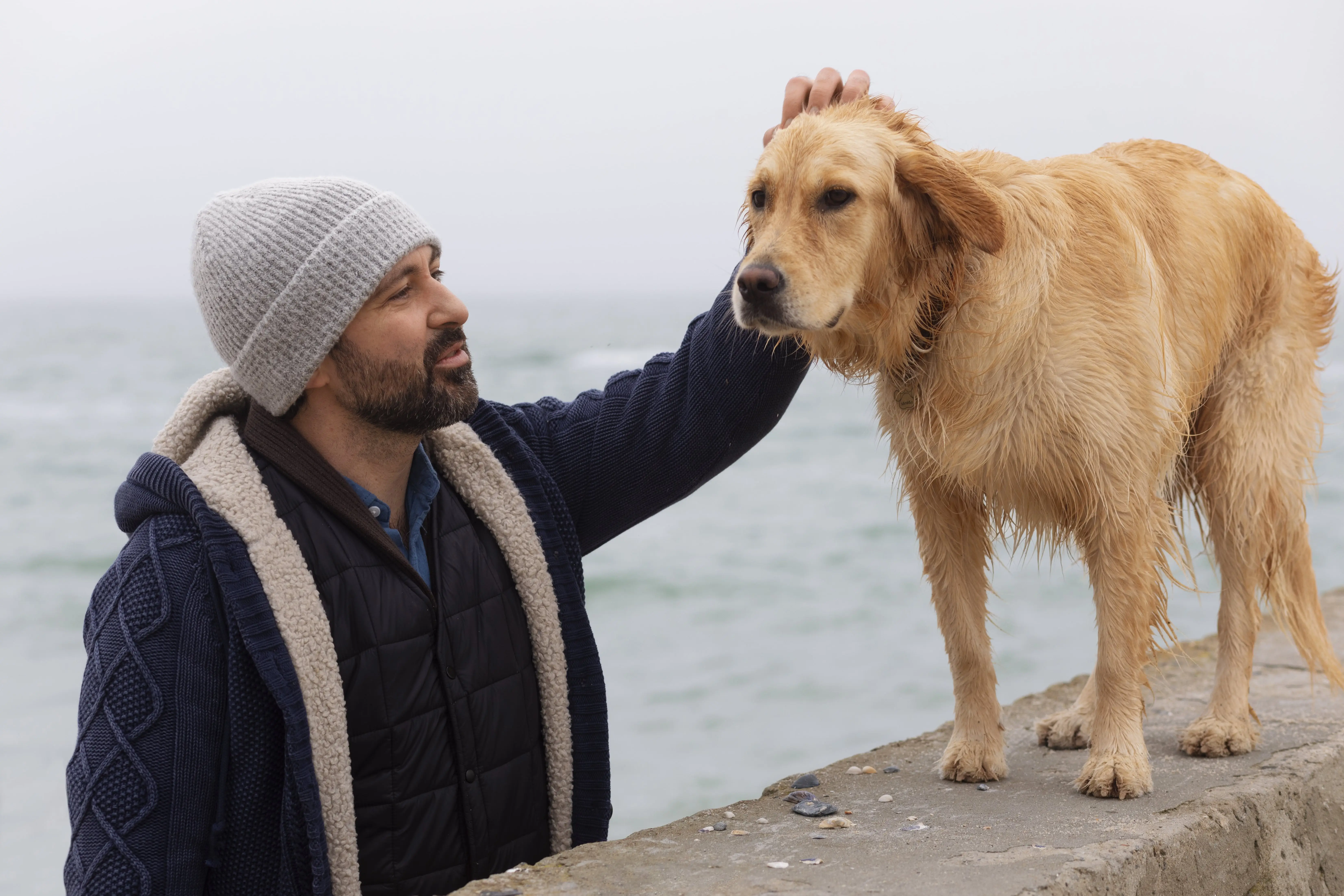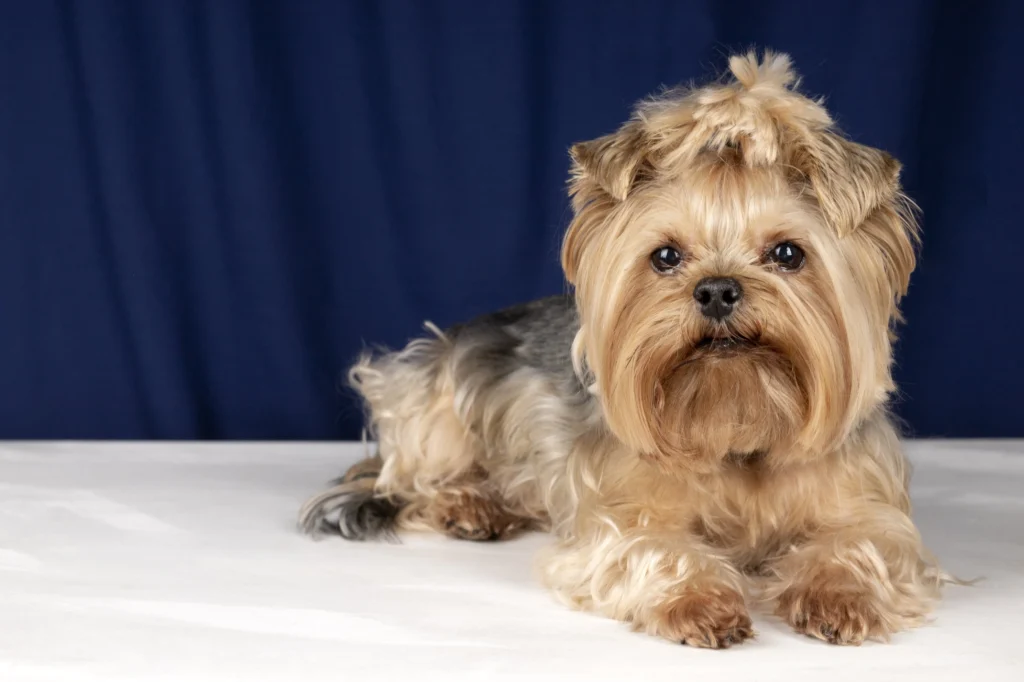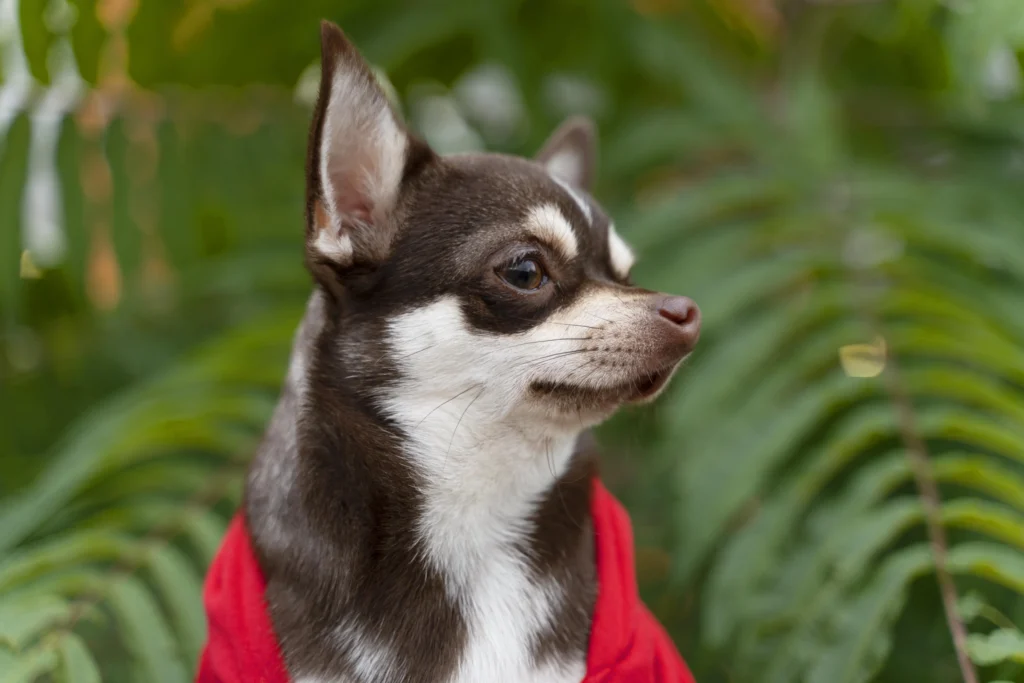There is something terribly dominating about the presence of a Great Pyrenees—its snowy white coat, massive shoulders, and expression of stillness in its stare suggest mountains, sheep, and a silent guard between the starlit skies. Historically called the Patou or Pyr, this enormous dog breed has spent centuries in flocks and houses, and it has made silent yet solid connections with human families. The Great Pyrenees, conditioned to deal with wolves and severe alpine weather and expansive scenery, is also comfortable as a loving family pet. We will discuss all that in this complete guide: its origins, physical characteristics, temperament, care and training requirements and health concerns, and its adaptation to the modern lifestyle. You found it appealing with its grandeur and its protector; read it, and before you finish, you will see what it really means to live with this marvelous dog.
Origins and Heritage: From Mountain Flocks to Estate Guardians
Yes—the Great Pyrenees can trace its roots back thousands of years. Scholars estimate that the breed’s ancestors arrived in the Pyrenees Mountains between 1,800 and 1,000 B.C. According to fossil evidence and written sources, ancient white mountain dogs may have been introduced to the West via Asia Minor and adapted to the rugged environment of the south of France and the north of Spain.
These dogs, over hundreds of years, developed to protect the livestock against predators such as wolves and bears; they were referred to as the patou in French, which translates to “the mountain dog.”
What was their place in history?
The Great Pyrenees were originally used as a guardian of livestock. They shepherded herds of sheep in high pastures in remote places, where they spent all their days and nights in the open air, not necessarily under human control. Their task: keep wolves away, guard shepherds, and keep the herd safe by means of them and their watchfulness.
By the 17th century, it attracted the attention of the nobles and the Royalty in France. The dogs gained status as symbols of dignity and loyalty while still serving in the mountains.
How Did They Get from Mountain Pastures to Homes?
As the centuries progressed, the Great Pyrenees gradually moved from isolated high altitudes to more settled lives. Shepherds brought them to villages; breeders in the 19th and 20th centuries refined standards for exhibitions and companionship. The breed was officially recognized by kennel clubs (for example, the AKC in 1933) and spread around the world, yet many still serve as guardians on farms and ranches.
Physical Characteristics: The Appearance of Majesty
Size, Build & Presence
The Great Pyrenees is undeniably large and impressive, but its size is functional rather than merely ornamental. Typical adult heights range from about 25–32 inches (64–81 cm) at the shoulder, and weights often span 90–125 pounds (41–57 kg) or more for males. The breed standard emphasises that the dog should appear “immense size, great majesty, keen intelligence, kindly expression … strong yet agile.”
Coat, Color & Texture
One of the breed’s most iconic features is its thick, double coat, built for mountain weather. The outer coat is long and slightly wavy or straight, and the undercoat is dense and insulating. Color is usually white, sometimes with subtle grey, tan, badger, or reddish-brown markings on the ears and body. The white color served a practical role: it helped the dog blend in with flocks and be less visible to predators.
Head, Expression & Movement
The head is proportionate—not overly large—with dark almond-shaped eyes conveying calm watchfulness, ears that drop close to the skull, and a bushy tail that often curves over the back when alert. On the move, the Great Pyrenees carries itself with effortless dignity, gait steady, and stride ground-covering but not heavy. These movement traits reflect the breed’s working heritage in rough mountain terrain.
Special Adaptations of Guardian Work
Other than size and coat, this breed has adaptations that served to guard the flock:
- A heavy insulating jacket to keep off the alpine cold and storms.
- Middle-speed but robust frame to drive rough, hilly slopes.
- A quiet and careful character to walk among sheep and never frighten them, but prepared to fight.
A natural sense of trust and self-sufficiency, which centuries of the care of the sentinels have not lost under the close eye of their hominid guardian.
Temperament & Personality: The Gentle Guardian
Do Great Pyrenees mix well with families?
Yes, when well trained and socialized, even the Great Pyrenees is amazingly calm, gentle, and loving towards its family. They are tolerant, particularly with children, protective, and never violent, and are calm and confident and soothing.
Nonetheless, they have the independent and occasionally tough heritage of being guardians. They have been reared to make independent decisions when they are guarding the flock, and therefore, training should reflect this characteristic.

Guardian Instincts & Protective Nature
Their guardian instincts remain strong—the breed was created to act independently, to patrol flocks, and to defend territory overnight. Today, that means the Great Pyrenees may bark to warn of unknown approaches, may challenge strange animals or people near their home, and often develops a strong bond with its “flock”—human and pet alike. Owners should expect alertness and work with it.
Independence, Intelligence & Training Reality
Because the breed historically made decisions without human supervision, it retains an independent streak. It may not always respond like an eager lapdog or obedience superstar. Training requires patience, consistent leadership, positive reinforcement, and respect for the dog’s intelligence. The knowledge of its guardian mindset assists the owners in avoiding frustrations.
Family Fit & Social Nature
The Great Pyrenees finds his place in the right home as a companion of the family. It is known that they are tolerant of other animals and very loyal, as well as patient with children. However, their size and protective behavior are reasons why they need supervision with small children; the dog must be allowed to have some space, and the dog should be socialized as early as possible to ensure a peaceful home.
Working Life: From Flocks to Farms to Families
Livestock Guardian Legacy
For centuries, this breed protected flocks of sheep high in the Pyrenees, keeping watch through nights, responding to wolves and bears, and moving autonomously among the herd. In the current generation of Great Pyrenees, one can see the DNA of generations of shepherd dogs. They are still used in farms to protect the flocks of sheep, goats, and even poultry that may be left without any supervision of their activities.
Transition to Domestic Companions
Over time, as predators decreased and agriculture changed, many Great Pyrenees transitioned into households and show rings. They were well-behaved family dogs since their grand figures, royal demeanor, and peaceful dispositions suited them. Nevertheless, many breeders and owners preserve working lines—dogs with active guardian instincts, capable of patrols, perimeter work, and livestock duties.
Modern Uses: Guarding, Therapy, Service Work
Out on the farms, Great Pyrenees have been employed for protection of property, service, search and rescue, therapy, and other purposes. They are flexible to jobs that demand presence and comfort with their size, their carefulness, and their even-temperedness and calmness. Some rural homes today still rely on a Pyr for livestock protection, while urban/suburban homes treat them as majestic companions and protectors.
Care Needs & Lifestyle Considerations
Space and Environment
Because of its size and moderate energy level, the Great Pyrenees thrives in homes with room—rural or suburban with large yards, secure fencing, and space to roam and patrol. Apartment living is not ideal unless you can provide daily access to large outdoor areas and time for exercise. The dog also tolerates cooler climates very well, thanks to its coat; warmer climates or hot, humid conditions may require adaptation and caution.
Exercise and Activity Level
Despite being large, the breed is not hyperactive—energy level is moderate. A daily walk, an opportunity to roam safely, and some play or work (e.g., farm duty, tug, or pull toy) suffice. But supplementing mental stimulation and giving them job-like tasks helps avoid boredom. A Pyr left idle may find its own jobs, which might include digging or patrolling.
Grooming, Coat Care & Shedding
The double, thick coat should be taken care of regularly; brush it at least once a week to take off dead hair, and to keep off mats, and more often during shedding seasons. The coat is self-cleaning and waterproof to a certain degree, so there is no need to bathe it regularly. Owners should be ready to do a lot of shedding and have to possess grooming supplies and time.
Nutrition, Growth & Health Maintenance
Large-breed diets are important. Puppies should not grow too fast, and bone/joint health must be monitored. They should be according to the puppy nutrition guide. The owners are expected to feed high-quality food that suits a working or large breed, keeps the weight under control, and prevents obesity (which increases the amount of stress on the joints), and have the veterinarian examine the pet, such as its hips, elbows, eyes, and heart.
Common Health Concerns & Lifespan
Lifespan and Outlook
The typical lifespan for the Great Pyrenees ranges around 10 to 12 years, though large-breed dogs often have shorter average lives than smaller breeds.
Health Issues to Be Aware Of
Key issues in the breed include:
- Hip and elbow dysplasia: the large size and bone structure.
- Bloat (gastric distension-volvulus): deep-chested breeds are at risk.
- Subaortic stenosis/heart conditions: not very frequent, but also applies to large working breeds.
- Osteochondrosis/joint development issues in puppies.
- Ear infections/skin problems: thick coats and floppy ears are prone to attacks.
- Loss of mobility and obesity: due to size, it is important to stay in shape.
Responsible breeders screen for these conditions, and owners should follow veterinary guidance, maintain a healthy weight, get appropriate exercise, and get regular preventative care.
Training & Socialization: Building the Guardian’s Heart
Early Socialization Is Critical
Because the Great Pyrenees has inherited a strong guarding instinct, early, consistent socialization is essential. Introduction of the puppy to people, children, and pets; environments; sounds; and situations enables it to gain confidence, not to be overly wary, and to act properly in various circumstances.
Leadership, Constancy, and Good Approaches
The breed is most receptive to those who are calm and confident as their leaders and soft-spoken as their trainers. Harsh correction is counterproductive for a dog bred to judge and act independently. Clear boundaries, consistent rules, rewards for good behavior, and patience with the breed’s natural independence yield the best results.
Guarding Instinct vs. Family Dog Behavior
Owners should work to channel the guardian instinct appropriately: training recall, leash manners, household rules, how to interact with visitors, and ensuring the dog knows when to patrol and when to relax. Because the breed may bark at night or patrol the yard, setting expectations early avoids neighbor complaints and ensures a harmonious home life.
Job-like Activities & Mental Stimulation
Giving the dog tasks—such as walking boundaries, retrieving, supervised farm or yard patrols, or simple “jobs”—helps satisfy its mental and physical drive. This reduces the risk of boredom and destructive behaviors.
Living with a Great Pyrenees: The Realities of Ownership
Family Life, Children & Other Pets
With proper socialisation and supervision, a Great Pyrenees can be an outstanding family dog: gentle with children, protective of the home, and calm in indoor settings. Yet its size means care around toddlers or elderly family members, and its guardian instincts require introductions and boundaries.
With other pets, particularly in multi-animal households, the breed often does well when introduced properly—especially if the others are socialized early.
Space, Climate & Home Fit
Owners should ensure adequate space: wide doorways, sturdy furniture, secure fencing, and room to roam. Because of their thick coat, cooler climates suit them better; in hot or humid regions, extra attention to shade, water access, and indoor cool spaces is essential.
Urban living is possible but more challenging—lack of space, fewer “patrol” opportunities, and potential neighbour issues with barking must be managed.
Time, Commitment & Cost
Because of size and grooming demand, owning a Great Pyrenees means significant time and resources: food costs are substantial, grooming tools and time required, and veterinary costs are often higher due to size or health risks. Prospective owners must realistically assess whether they can commit long-term to the breed.
The Bond & Legacy
For those who embrace the breed’s nature, the Great Pyrenees rewards generously. Their bond is deep, their presence noble, their loyalty profound. They may not rush to sit in your lap, but they will stand by you, protect your family, and bring a quiet, majestic companionship often described as irreplaceable.
Pros & Cons: Should You Choose a Great Pyrenees?
Pros
- Majestic appearance; regal presence.
- Calm, loyal, and protective temperament.
- Excellent with children, good for family life.
- Low to moderate exercise needs (for a large breed), yet still active enough to enjoy outdoor life.
- Strong guardian instincts offer security and peace of mind.
Cons
- A very large size requires space, resources, and management.
- Heavy shedding and grooming demands.
- Potential for substantial health costs and somewhat shorter lifespan than smaller breeds.
- Strong guardian and independent instincts mean training and socialization are key; not ideal for very passive owners.
Barking or night patrol behavior may be problematic for some households or neighbors.
Interesting and Little-Known Facts
- The breed has been fossil-linked to ancient white mountain dogs dating back over 3,000 years.
- Their white coat served a purpose on the mountains: It let shepherds distinguish dogs from sheep in snow and poor visibility.
- They often have double dewclaws on the hind legs—a feature still found in functional working lines and sometimes required in breed standards.
- Some working Pyrs are nocturnal—they patrol at night, alert to predators, wind, and sound. The breed’s natural rhythm sometimes shows in home life as extra “night watch.”
- Despite the name “Great Pyrenees,” in France they are called Chien de Montagne des Pyrénées (“Mountain Dog of the Pyrenees”).
- Royalty and nobility in 17th-century France kept the breed as a symbol of status, yet the dogs never lost their working roots.
- In some regions, the Great Pyrenees is still used in combination with ewes, as its size and calm allow integration with livestock rather than just guarding.
- The thick coat that keeps them warm in mountain winters also means they protect themselves from cold better than heat—they are more comfortable in cooler climates.
Their temperament makes them suitable for therapeutic roles: many Great Pyrenees serve as calming service or companion dogs because of their gentle nature and size.
Conclusion: The Mountain Guardian at Home
The Great Pyrenees is not just a dog breed; it is an heirloom of mountain shepherds, snow-filled fields, silent patrols, and best friends. It introduces a modest grandeur into the household, the heart of protection, and the tenderness of a very powerful soul. To people who receive it with open arms, it demands in return only a place of belonging, respect, and a life in which it can be part of the family, as much a nanny as a friend.
If you are searching for a dog that blends majestic presence with a big heart, that will stand watch by your door and then curl up beside your feet, then the Great Pyrenees may be your match. However, do not forget it is not a light breed. It requires time, knowledge, patience, and devotion. In its turn, it gives people in exchange something hard to find: trust, power, and impeccable protection.
Since the shepherds of the Pyrenees entrusted their flocks to this dog, you may entrust to it your home and heart—and have in the Great Pyrenees a lifelong guardian.


